Your cart is currently empty!
Month: July 2024
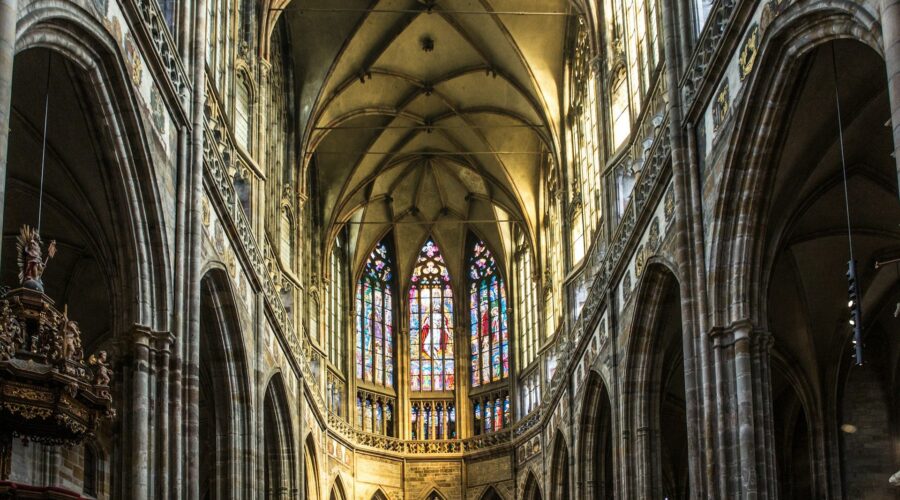
Mary Immaculate Church: A Beacon of Faith and Community
A History Steeped in Devotion
Nestled in the heart of a vibrant community, Mary Immaculate Church has stood as a testament to faith and unwavering devotion for over a century. Since its humble beginnings in 1905, the church has witnessed the growth of its parish, leaving an enduring mark on the lives of countless individuals and families.
Architectural Marvel
The church’s imposing neo-Gothic architecture instantly captures the eye. Its soaring spires, intricate stained-glass windows, and elegant stonework create a breathtaking spectacle. Inside, the sanctuary exudes a sense of reverence and awe, with its high vaulted ceilings and ornate altar.
Dedicated to the Blessed Mother
Mary Immaculate Church is dedicated to the Blessed Virgin Mary, revered as the mother of Jesus Christ. The church’s namesake honors Mary’s Immaculate Conception, which signifies her freedom from original sin. This devotion permeates every aspect of the church’s liturgy and community life.
Vibrant Parish Community
Beyond its architectural splendor, Mary Immaculate Church is a vibrant and inclusive parish community. It fosters a sense of belonging and connection among its members. Regular Masses, faith education programs, and social gatherings provide opportunities for parishioners to deepen their faith and build enduring bonds.
Outreach and Service
Mary Immaculate Church is not only a spiritual haven but also a beacon of hope and support in the community. It extends its outreach to those in need through various programs and initiatives. These include food pantries, clothing drives, and assistance to the homeless.
Education and Formation
The church places great emphasis on education and formation. It offers a comprehensive range of programs for children, youth, and adults. From Sunday school classes to adult Bible studies, there is something for every seeker of spiritual knowledge and growth.
Community Groups and Ministries
- Knights of Columbus
- Altar Rosary Society
- Youth Group
- Music Ministry
- Parish Council
Pastoral Care and Support
Mary Immaculate Church is committed to providing pastoral care and support to its parishioners. Priests offer regular counseling, spiritual direction, and visitations to those in need. The church also has a dedicated team of lay volunteers who assist with various pastoral programs.
Events and Celebrations
Throughout the year, Mary Immaculate Church hosts a variety of events and celebrations that bring the parish community together. These include:
- Annual parish feast
- Advent and Christmas programs
- Lenten retreats
- Easter celebrations
- Community picnics and socials
Mass Schedule Day Time Sunday 8:00 AM | 10:30 AM | 12:30 PM (Spanish) Monday 8:00 AM Tuesday 8:00 AM Wednesday 8:00 AM Thursday 8:00 AM Friday 8:00 AM Saturday 8:00 AM | 4:00 PM Contact Information
Mary Immaculate Church Website
Mary Immaculate Church
123 Main Street, Anytown, CA 12345
Phone: (123) 456-7890
Email: [email protected]
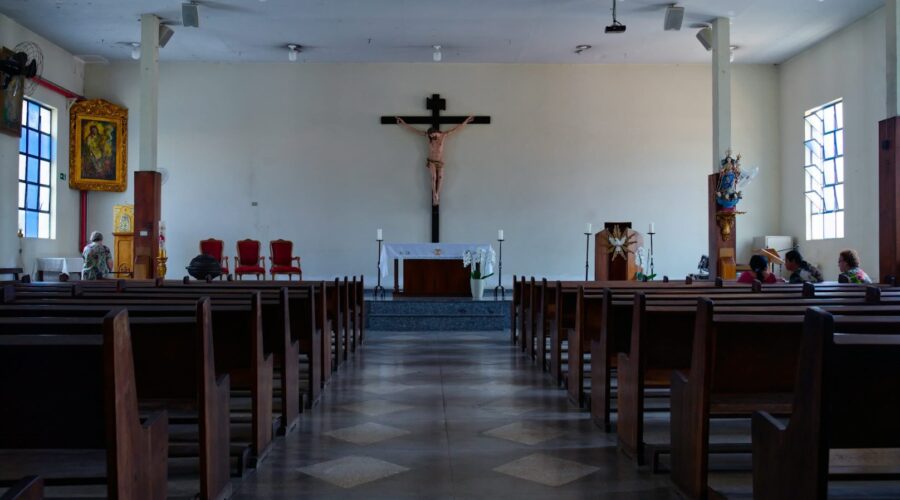
Louis Church: A Detailed Guide to Its History, Architecture, and Significance
Introduction
Louis Church, also known as Saint Louis Church, is a Roman Catholic parish church located in the historic center of Seville, Spain. It is one of the city’s most iconic landmarks and an important example of Gothic architecture. This blog post will provide a comprehensive guide to Louis Church, exploring its history, architecture, and significance.
History of Louis Church
Construction
The construction of Louis Church began in 1248 under the reign of King Alfonso X of Castile. It was built on the site of a former mosque, and its design was heavily influenced by the Gothic architecture of northern Europe. The church was completed in 1350, although some additions and modifications were made in subsequent centuries.
Religious Significance
Louis Church has played a significant role in the religious life of Seville. It is dedicated to Saint Louis of Toulouse, who was born in the city in 1274. The church became a popular pilgrimage site, and its reputation grew throughout the Middle Ages. Today, it remains an important center of worship for the Catholic community in Seville.
Architecture of Louis Church
Exterior
Louis Church is a large and impressive building with a distinctive Gothic exterior. The facade is dominated by a large rose window, which is flanked by two towers. The towers are decorated with intricate carvings and statues, and they provide a dramatic entrance to the church.
Interior
The interior of Louis Church is equally impressive. The nave is wide and spacious, and it is lined with tall, pointed arches. The ceiling is decorated with elaborate vaulting, and the walls are adorned with beautiful stained glass windows. The church also contains several important works of art, including a statue of Saint Louis of Toulouse and a painting of the Virgin Mary by Murillo.
Significance of Louis Church
Cultural Heritage
Louis Church is a valuable part of Seville’s cultural heritage. It is one of the city’s most important architectural landmarks, and it has played a significant role in the religious life of the community. The church is also a popular tourist destination, and it attracts visitors from all over the world.
Religious Center
As mentioned earlier, Louis Church remains an important religious center for the Catholic community in Seville. It is a place of worship, pilgrimage, and community gathering. The church also hosts a variety of religious events throughout the year, including masses, concerts, and exhibitions.
Louis Church for Tourists
Visiting Hours
Louis Church is open to the public every day of the week. The visiting hours are as follows:
- Monday to Saturday: 11:00 AM – 6:00 PM
- Sunday: 12:00 PM – 6:00 PM
Admission
Admission to Louis Church is free of charge. However, there is a suggested donation of 3 euros for visitors who wish to help with the maintenance and upkeep of the church.
Guided Tours
Guided tours of Louis Church are available in English, Spanish, and French. The tours last for approximately 45 minutes, and they provide a detailed overview of the church’s history, architecture, and significance. Guided tours can be booked in advance by contacting the church office.
Conclusion
Louis Church is a magnificent example of Gothic architecture and a significant landmark in Seville. Its rich history, impressive architecture, and religious significance make it a must-visit destination for anyone interested in the city’s cultural heritage. Whether you are a religious pilgrim, an art enthusiast, or simply a tourist, Louis Church is sure to leave a lasting impression.

LDS.org: A Gateway to Faith, Community, and Resources
LDS.org is the official website of The Church of Jesus Christ of Latter-day Saints (LDS Church). It provides a wealth of information and resources about the Church’s beliefs, practices, history, and global humanitarian efforts.
Navigating LDS.org
The website is user-friendly and well-organized, with clear navigation menus and search functionality. The homepage features highlighted content, links to core sections, and quick access to frequently used resources.
Core Sections:
- Study: Provides access to scriptures, Church publications, and other resources for spiritual growth and learning.
- Library: Houses a vast collection of books, articles, and historical documents related to the Church.
- Temples: Offers information about LDS temples, their sacred nature, and how to prepare for temple service.
- Family: Supports families with resources on marriage, parenting, and strengthening family relationships.
- Missionary: Provides information about missionary service, including preparation, areas of service, and success stories.
- Youth: Specifically tailored for youth, offering resources, activities, and leadership opportunities.
- About: Provides an overview of the Church’s history, beliefs, and global reach.
- Global: Connects users with LDS Church resources and information in over 100 languages and countries.
Valuable Resources
LDS.org offers a range of resources that enhance spiritual understanding, foster community, and support members in their everyday lives.
Scriptures and Publications:
The website provides access to the standard works of scripture, including the Bible, Book of Mormon, Doctrine and Covenants, and Pearl of Great Price. It also features Church magazines, such as the Ensign and New Era.
Family History and Genealogy:
FamilySearch, the Church’s genealogy service, is integrated into LDS.org, allowing users to access historical records, family trees, and other resources.
Podcasts and Videos:
LDS.org offers a variety of podcasts and videos on topics ranging from gospel teachings to Church history and family relationships.
Community and Outreach:
The website promotes community and outreach efforts through resources such as Meet the Mormons, which provides a glimpse into the beliefs and lives of LDS Church members.
Tips for Using LDS.org Effectively
- Create a User Account: Sign up for a free account to save your preferences, track your progress, and receive personalized content.
- Use Keyword Search: The powerful search engine allows you to find specific information quickly and efficiently.
- Follow Social Media: Stay connected with the latest content and announcements by following LDS.org on social media platforms.
- Engage in Forums: Join online forums to connect with other members, ask questions, and share experiences.
- Download the App: Access LDS.org content and resources on the go with the official mobile app.
Conclusion
LDS.org is a comprehensive and valuable resource for members and those interested in learning more about The Church of Jesus Christ of Latter-day Saints. Its user-friendly interface, extensive content, and community-building features make it an essential tool for spiritual growth, knowledge acquisition, and connection with the worldwide LDS community.
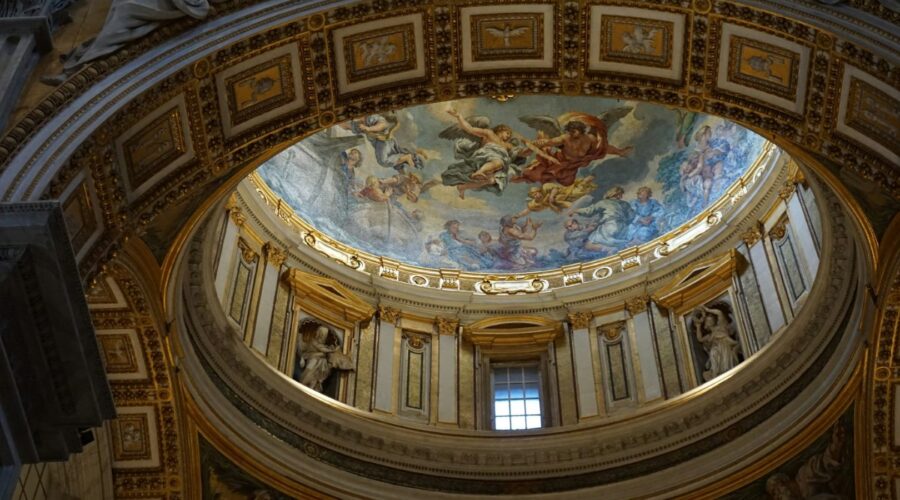
Unlock the Role of Lay Ministers: A Comprehensive Guide
Introduction
Lay ministers play a crucial role in the spiritual well-being of communities worldwide. They are individuals who, while not ordained, are called to serve in a variety of capacities within faith organizations.
This comprehensive guide will delve into the multifaceted world of lay ministers, exploring their roles, responsibilities, and the impact they have on their communities.
Roles and Responsibilities
Preaching and Teaching
- Lay ministers may deliver sermons, lead Bible studies, and teach various faith-based topics.
- They help members of their congregation grow in their faith and understanding of religious teachings.
Pastoral Care
- Lay ministers provide emotional and spiritual support to individuals and families in need.
- They visit the sick, offer comfort during times of grief, and assist with various community outreach programs.
Worship Leadership
- Lay ministers lead worship services, including music, liturgy, and sermon delivery.
- They help create a meaningful and uplifting worship experience for the congregation.
Evangelism
- Lay ministers share their faith with others and invite them to join the faith community.
- They reach out to individuals who may not have previously considered faith or who are seeking a deeper connection with the divine.
Other Roles
- Lay ministers may also serve in administrative or leadership roles, such as managing church finances, organizing events, or serving on committees.
- Their contributions are essential to the smooth operation of the faith community.
Becoming a Lay Minister
Calling
Becoming a lay minister typically begins with a personal sense of calling to serve the faith community.
Training
Most denominations offer training programs for lay ministers. These programs cover topics such as:
- Theology
- Scripture
- Counseling skills
- Church history
Ordination
While lay ministers are not ordained in the same way as clergy, some denominations may offer a commissioning or licensing process. This recognizes the formal training and commitment of the lay minister.
Impact of Lay Ministers
Lay ministers have a profound impact on their communities by:
- Providing a vital connection between the clergy and the congregation
- Meeting the spiritual needs of individuals and families
- Supporting the mission and vision of the faith community
- Building bridges between the church and the wider community
Conclusion
Lay ministers are an essential part of the fabric of faith communities worldwide. Their dedication, compassion, and skills enrich the lives of countless individuals and help to sustain the vitality of religious institutions.
By embracing the role of lay ministers, we can continue to foster a vibrant and engaged faith community that serves as a beacon of hope and guidance for generations to come.
Further Reading
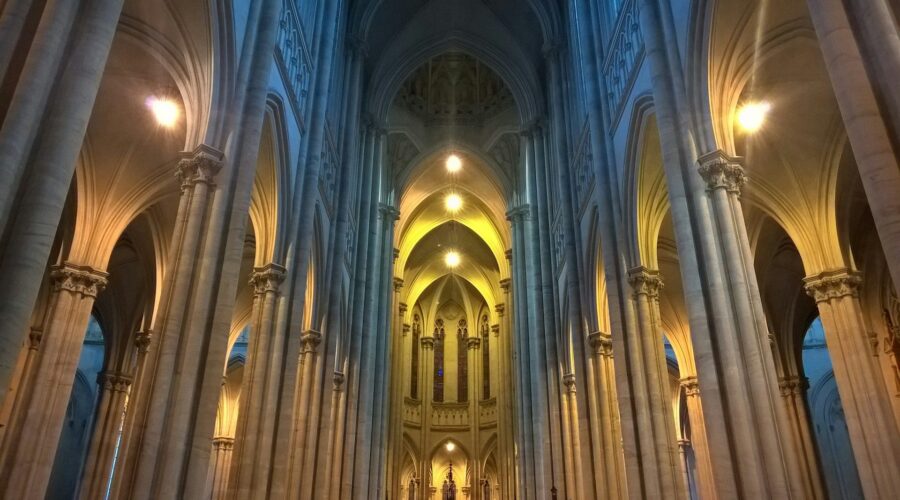
Discover the Lateran: Unraveling the History of Rome’s Papal Palace
Introduction
Nestled in the heart of Rome, the Lateran Complex holds immense historical and religious significance. As the former residence of the popes and the site of the oldest basilica in the West, the Lateran represents a rich tapestry of architectural marvels, papal ceremonies, and ecclesiastical traditions.
The Archbasilica of St. John Lateran
Also known as the “Cathedral of Rome,” the Archbasilica of St. John Lateran is the oldest and holiest of Rome’s four patriarchal basilicas. It was founded by Emperor Constantine the Great in the 4th century and has undergone numerous renovations over the centuries.
Key Features:
- Imposing Facade: Flanked by two bell towers, the basilica’s grand facade features a majestic portico and intricate mosaics.
- Spacious Nave: The central nave, adorned with 12 apostles statues, leads to the high altar and the apse.
- Transepts: Two transepts intersect the nave, creating a cruciform layout. The right transept leads to the cloister.
- Altar of the Chair: A revered relic, the Altar of the Chair is believed to contain the wooden chair used by St. Peter in Antioch.
- Corsini Chapel: Added in the 18th century, this opulent chapel houses the tomb of Pope Clement XII.
The Lateran Palace
Adjacent to the basilica, the Lateran Palace served as the residence of the popes from the 4th to 14th centuries. However, after the return of the papacy from Avignon in the 14th century, the Vatican Palace became the primary papal residence.
Key Features:
- Grand Staircases: Two monumental staircases, the Scala Sancta and the Scala Regia, connect the palace to the basilica.
- Sala Regia: This grand hall once hosted papal coronations and is adorned with frescoes depicting events from papal history.
- Vatican Council Chamber: The council chamber was built in the 16th century and hosted the Fifth Lateran Council in 1512-1517.
The Lateran Museum complex
Established in the Vatican Museums, the Lateran Museum complex comprises several museums dedicated to papal and ecclesiastical artifacts, art, and history.
Key Museums:
- Lateran Museum: Houses a vast collection of archaeological finds from the Roman era, including sculptures, mosaics, and reliefs.
- Christian Museum: Exhibits early Christian and medieval art and liturgical objects, showcasing the development of Christian iconography.
- Ethnological Missionary Museum: Displays artifacts from the Catholic Church’s missionary activities worldwide.
Ecclesiastical Significance
The Lateran Complex holds immense significance in the Catholic Church:
1. Papal Residence:
As the former papal residence, the Lateran was the center of the Church’s administrative and spiritual authority.
2. Ecumenical Councils:
Five Lateran Ecumenical Councils were held in the Lateran Palace, addressing ecclesiastical reforms, doctrine, and Church governance.
3. Diocesan Basilica:
The Archbasilica of St. John Lateran is the cathedral of the Diocese of Rome and the principal church of the Bishop of Rome, the Pope.
Visiting the Lateran Complex
The Lateran Complex is open to the public and offers guided tours. Visitors can explore the basilica, the palace, and the Lateran Museum complex. Practical information:
- Address: Piazza di San Giovanni in Laterano, 4
- Hours: Basilica: Monday-Friday: 7am-6pm, Saturday: 7am-7pm, Sunday: 9am-7pm. Palace: Tuesday-Sunday: 9am-5pm.
- Admission: Basilica: Free. Lateran Museum complex: €8 (full), €4 (reduced)
- Metro: Line A, San Giovanni station
In Conclusion
The Lateran Complex is a testament to the enduring legacy of the Catholic Church and the rich history of Rome. Its architectural marvels, sacred relics, and ecclesiastical significance continue to captivate visitors today. Whether you’re a devout Christian or an admirer of history and art, the Lateran Complex is a must-see destination in the Eternal City.
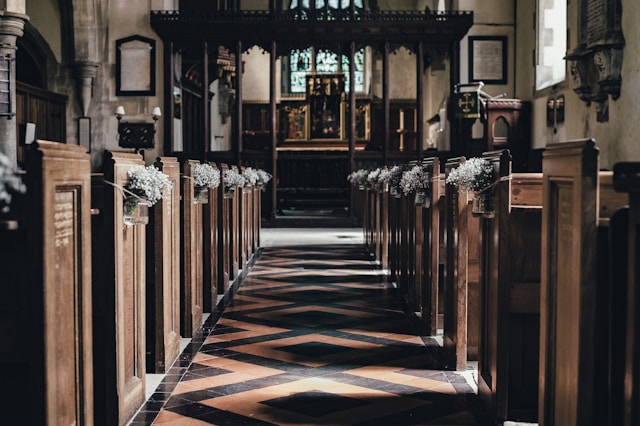
Discover the Life and Ministry of Pastor William Folorunso Kumuyi
Pastor William Folorunso Kumuyi is the founder and General Superintendent of the Deeper Christian Life Ministry, a global Pentecostal movement with a presence in over 140 countries. Known for his unwavering commitment to holiness and biblical truth, Pastor Kumuyi has dedicated his life to spreading the gospel and discipling believers.
Early Life and Education
William Folorunso Kumuyi was born on June 6, 1941, in Erinje, Osun State, Nigeria. He received his early education at Baptist Day School, Erinje, and later attended Mayflower Secondary School, Ikenne, Ogun State. In 1964, he graduated from the University of Ibadan with a First Class Honors degree in Mathematics.
Call to Ministry
While studying at the University of Ibadan, Kumuyi encountered the book “Total Commitment” by Elisabeth Elliot, which inspired him to seek a deeper relationship with God. He joined the Scripture Union and became involved in evangelism, leading Bible studies and sharing his faith with fellow students.
Foundation of Deeper Christian Life Ministry
In 1973, at the age of 32, Kumuyi founded the Deeper Christian Life Ministry in Lagos, Nigeria. The emphasis of the ministry was on holiness, Bible study, prayer, and evangelism. The church grew rapidly, and by the 1980s, it had established branches throughout Nigeria and beyond.
Teachings and Beliefs
Pastor Kumuyi’s teachings focus on the following principles:
Holiness:
- Emphasis on purity of heart, thought, and action.
- Adherence to biblical standards of morality and conduct.
Bible Study:
- In-depth study of the Bible as the only source of truth.
- Regular participation in Bible study groups and personal devotions.
Prayer:
- Importance of fervent and persistent prayer.
- Encouragement of intercessory prayer for others.
Evangelism:
- Mission to share the gospel with the world.
- Emphasis on personal witnessing and outreach programs.
Global Impact
Deeper Christian Life Ministry has made significant contributions to Christianity worldwide. Pastor Kumuyi has preached in crusades and conferences across the globe, reaching millions with the gospel message. The church has established schools, hospitals, and orphanages in numerous countries.
Awards and Recognition
Pastor Kumuyi has received numerous awards and recognitions, including:
- Doctor of Divinity (Honoris Causa) from the University of Ibadan
- Doctor of Humane Letters (Honoris Causa) from Oral Roberts University
- Commander of the Order of the Federal Republic (CFR), one of Nigeria’s highest national honors
Conclusion
Pastor William Folorunso Kumuyi is a renowned Christian leader whose life and ministry have impacted countless lives. His unwavering commitment to holiness, biblical truth, and evangelism has left an enduring legacy on Christianity worldwide. He continues to inspire and guide believers, leading them on a journey of discipleship and spiritual growth.
Additional Resources
* Deeper Christian Life Ministry
* Pastor William F. Kumuyi’s Personal Website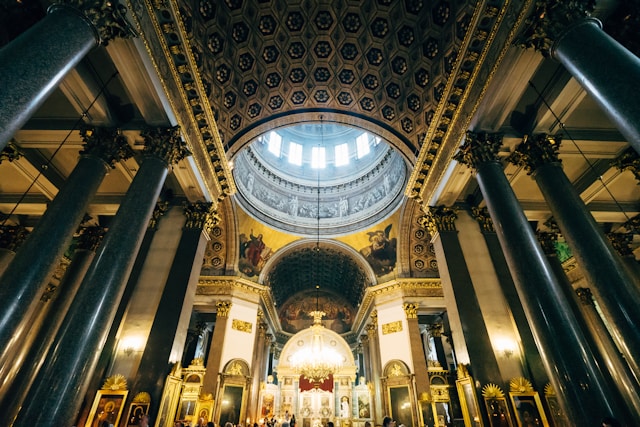
Discover the Kim Burrell Church: A Haven of Praise, Worship, and Empowerment
Introduction
Kim Burrell Church is a thriving Christian community in Houston, Texas, led by the renowned gospel singer and minister, Kim Burrell. Known for its passionate worship, inspiring messages, and community outreach, the church has become a beacon of hope and empowerment for thousands of believers.
A Legacy of Praise and Worship
Kim Burrell’s Anointed Voice
Kim Burrell’s extraordinary vocal abilities have captivated audiences worldwide. Her powerful voice, soaring melodies, and heartfelt lyrics have earned her numerous awards and accolades. Her music has inspired countless souls and brought a deeper connection with God.
Dynamic Worship Experiences
The worship services at Kim Burrell Church are transformative and uplifting experiences. The congregation enthusiastically participates in vibrant singing, fervent prayer, and dynamic preaching. The atmosphere is electric as the Holy Spirit moves and anoints the worshipers.
Biblical Teachings and Empowerment
Sound Doctrinal Foundation
Kim Burrell Church adheres to a strong biblical foundation. Pastor Burrell and her team meticulously study the scriptures and deliver sermons that are both theologically sound and transformative. The congregation is taught practical principles for daily living, personal growth, and spiritual maturity.
Empowering Ministry
Empowerment is a central theme at Kim Burrell Church. Through workshops, mentorship programs, and community initiatives, the church equips its members to fulfill their God-given potential. They are encouraged to discover their spiritual gifts, pursue their passions, and make a positive impact on the world.
Community Outreach and Social Justice
Serving the Needy
Kim Burrell Church actively reaches out to those in need in the community. Through food pantries, clothing drives, and community outreach programs, the church provides tangible support to the less fortunate. They demonstrate the love of Christ by serving those who are hurting.
Social Justice Initiatives
The church also takes a vocal stance on social justice issues. Pastor Burrell and her team speak out against injustice, racism, and inequality. They advocate for peace, unity, and equal rights for all.
Membership and Involvement
Joining the Congregation
Becoming a member of Kim Burrell Church involves a commitment to Jesus Christ, a willingness to serve others, and a desire for spiritual growth. The church provides opportunities for connection and involvement through various ministries, small groups, and volunteer opportunities.
Getting Involved
There are numerous ways to get involved at Kim Burrell Church:
- Join a worship team
- Volunteer in a ministry
- Participate in small groups
- Serve in the community
Location and Contact Information
Kim Burrell Church is located at: 8310 W Tidwell Rd, Houston, TX 77040
Phone: (713) 937-7172
Website: www.kimburrellchurch.orgConclusion
Kim Burrell Church is a vibrant and empowering Christian community that offers a welcoming and nurturing environment for spiritual growth, worship, and service. Through its passionate worship, sound biblical teachings, and community outreach, the church makes a significant impact in the lives of its members and the surrounding community. Whether you are seeking a spiritual home or looking for a place to serve, Kim Burrell Church is a beacon of hope and a transformational force in the lives of believers.
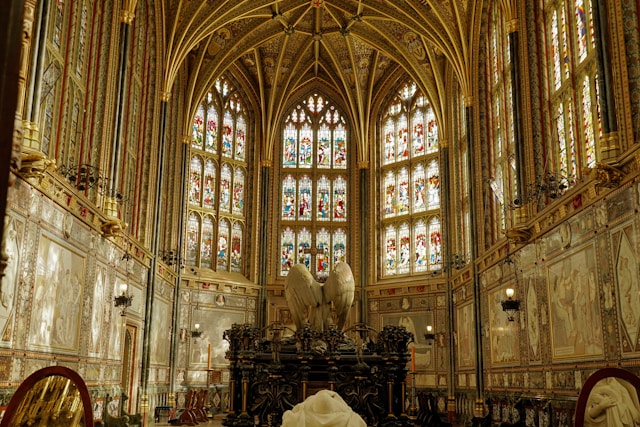
Jubilees: A Guide to Royal Anniversaries and Celebrations
A jubilee is a special anniversary of a monarch’s accession to the throne. It is typically celebrated with a series of events and ceremonies, and often marks a significant milestone in the monarch’s reign.
Types of Jubilees
There are several different types of jubilees, each marking a different number of years on the throne:
- Silver Jubilee: 25 years
- Golden Jubilee: 50 years
- Diamond Jubilee: 60 years
- Sapphire Jubilee: 65 years
- Platinum Jubilee: 70 years
- Blue Sapphire Jubilee: 65 years
- Emerald Jubilee: 80 years
- Centenary Jubilee: 100 years
Royal Jubilees in History
Some of the most famous royal jubilees in history include:
- Queen Victoria’s Golden Jubilee (1887): This was the first major jubilee celebration in British history, and it marked Queen Victoria’s 50 years on the throne. The celebration included a grand procession through London, a banquet at Buckingham Palace, and a series of other events.
- Queen Elizabeth II’s Silver Jubilee (1977): This jubilee celebrated Queen Elizabeth II’s 25 years on the throne. The celebration included a service of thanksgiving at St. Paul’s Cathedral, a banquet at Buckingham Palace, and a series of other events.
- Queen Elizabeth II’s Golden Jubilee (2002): This jubilee celebrated Queen Elizabeth II’s 50 years on the throne. The celebration included a service of thanksgiving at St. Paul’s Cathedral, a banquet at Buckingham Palace, a series of other events, and a special concert at Buckingham Palace.
- Queen Elizabeth II’s Platinum Jubilee (2022): This jubilee celebrated Queen Elizabeth II’s 70 years on the throne. The celebration included a service of thanksgiving at St. Paul’s Cathedral, a banquet at Buckingham Palace, a series of other events, and a special concert at Buckingham Palace.
Jubilee Traditions
There are a number of traditional events and ceremonies that are associated with jubilees. These include:
- Trooping the Colour: This is a military parade that is held on the monarch’s official birthday. It is a traditional part of the jubilee celebrations.
- Service of Thanksgiving: This is a religious service that is held to give thanks for the monarch’s reign. It is typically held at a major cathedral.
- Banquet at Buckingham Palace: This is a grand banquet that is held at Buckingham Palace to celebrate the monarch’s jubilee. It is attended by members of the royal family, politicians, and other dignitaries.
- Special Concerts: Special concerts are often held to celebrate jubilees. These concerts typically feature performances by some of the world’s most famous musicians.
- Fireworks Display: A fireworks display is often held to mark the end of the jubilee celebrations. The fireworks display is typically set off over Buckingham Palace.
Jubilee Souvenirs
A variety of souvenirs are typically produced to commemorate jubilees. These souvenirs can include:
- Commemorative Coins: Special commemorative coins are often minted to mark jubilees. These coins are typically made of gold, silver, or other precious metals.
- Stamps: Special stamps are often issued to mark jubilees. These stamps typically feature the monarch’s portrait or other jubilee-related designs.
- Medals: Special medals are often issued to mark jubilees. These medals are typically awarded to members of the royal family, politicians, and other dignitaries.
- Souvenir Mugs: Souvenir mugs are often produced to mark jubilees. These mugs typically feature the monarch’s portrait or other jubilee-related designs.
- T-shirts: T-shirts are often produced to mark jubilees. These t-shirts typically feature the monarch’s portrait or other jubilee-related designs.
Conclusion
Jubilees are a special way to celebrate the anniversary of a monarch’s accession to the throne. They are typically marked with a series of events and ceremonies, and often feature traditional elements such as Trooping the Colour and a service of thanksgiving. Jubilees are also a time to reflect on the monarch’s reign and to celebrate their achievements.
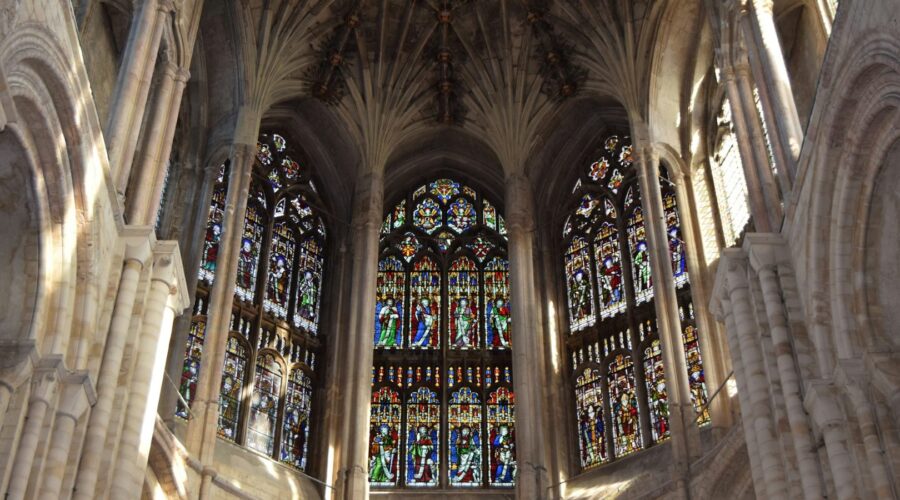
Jimmy Evans Leaves Gateway Church: A Comprehensive Overview
Introduction
Jimmy Evans, a prominent evangelical pastor and author, has announced his departure from Gateway Church, the massive megachurch headquartered in Southlake, Texas. This significant change begs many questions about his reasons for leaving, his future plans, and the implications for both Gateway Church and the broader evangelical community.
Background
Who is Jimmy Evans?
Jimmy Evans is an American pastor, author, and speaker known for his teachings on marriage, family, and spiritual growth. He has authored over 20 books, including the best-sellers “Marriage on the Rock” and “The Divine Romance.” Evans has been a pastor at Gateway Church since 2009, serving as the associate senior pastor under founding pastor Robert Morris.
Why Jimmy Evans is Leaving Gateway Church
Evans’s departure from Gateway Church was announced on March 20, 2023, in a joint statement by Evans and Morris. The statement did not provide specific reasons for Evans’s departure, stating that he is “transitioning to a new season in his ministry.” However, sources close to the situation have indicated that there were differing views on the direction of the church, as well as a desire from Evans to focus more on his writing and speaking ministry.
There have been reports of tension and conflict within Gateway Church over the past few months, which may have contributed to Evans’s decision. Additionally, Evans’s wife, Lisa, has been facing health challenges, which may have also influenced their decision to leave the church.
Impact on Gateway Church
Leadership Changes
Evans’s departure will create a significant leadership void at Gateway Church. He has been a key figure in the church’s growth and ministry, and his absence will be felt. Morris has announced that he will reassume the role of lead pastor, and the church is expected to conduct a search for a new associate senior pastor.
Church Culture and Ministry
Evans’s teachings on marriage and family have had a significant impact on Gateway Church’s culture. It is unclear how his departure will affect the church’s emphasis on these topics. Additionally, Evans has been a popular speaker at Gateway’s conferences and events. His absence may create a need for the church to adjust its programming and find new speakers.
Jimmy Evans’s Future Plans
Evans has not yet announced his specific plans for the future. However, he has stated that he intends to continue writing, speaking, and teaching about marriage, family, and spiritual growth. He may start his own ministry or join another church in a leadership role.
Questions for the Future
What are the Long-Term Implications for Gateway Church?
The long-term implications of Evans’s departure will depend on how Gateway Church responds to his absence. If the church can successfully adjust its leadership and maintain its focus on its mission, it may continue to thrive. However, if the church experiences significant conflict or division, it could have a negative impact on its growth and reputation.
What will Jimmy Evans’s New Ministry Look Like?
It is unclear what Jimmy Evans’s new ministry will look like. He may start his own church, join another church as a pastor, or focus on writing and speaking full-time. His new ministry will likely reflect his passions and strengths, which include teaching about marriage, family, and spiritual growth.
Conclusion
Jimmy Evans’s departure from Gateway Church is a significant event that has raised many questions and sparked much speculation. The reasons for his departure are not fully known, but it is clear that he felt compelled to make a change. Gateway Church will need to adjust to Evans’s absence, and it remains to be seen how this transition will affect the church’s leadership, culture, and ministry. Evans’s future ministry plans are also uncertain, but he will likely continue to teach about marriage, family, and spiritual growth.

Jeremy Foster: Transforming Lives at Hope City
Introduction
Jeremy Foster, a visionary leader, has dedicated his life to empowering the underprivileged through Hope City, a comprehensive non-profit organization. Located in Kansas City, Missouri, Hope City provides an array of transformative programs and services that address the root causes of poverty and homelessness.
Hope City’s Mission and Vision
Hope City’s mission is to “break the cycle of poverty and homelessness by providing hope, resources, and empowerment to individuals and families in need.” The organization’s vision is to create a community where everyone has the opportunity to achieve their full potential.
Core Programs and Services
Housing
- Emergency shelter for individuals and families
- Transitional housing for individuals and families
- Permanent supported housing for chronically homeless individuals
Education
- Early childhood education
- After-school programs
- Job training and placement
Healthcare
- Primary and preventive healthcare
- Behavioral health services
- Substance abuse treatment
Employment
- Job training and placement
- Micro-enterprise development
- Support for entrepreneurs
Community Partnerships
Hope City collaborates with a wide range of community partners to maximize its impact. These partnerships include:
- Local businesses
- Non-profit organizations
- Government agencies
- Faith-based organizations
Success Stories
Hope City has helped countless individuals and families break the cycle of poverty and homelessness. Here are some inspiring success stories:
- Maria: A young mother who fled domestic violence found shelter and support at Hope City. She completed the job training program and secured a stable job, enabling her to provide a better life for her children.
- John: A homeless veteran struggled with addiction and mental health issues. Hope City provided him with counseling, housing, and job training. John is now living independently and working in the community.
- James: A formerly incarcerated individual was given a second chance at Hope City. He participated in the micro-enterprise development program and started his own successful small business.
How to Support Hope City
There are several ways to support Hope City’s mission:
- Donate: Monetary donations are essential for sustaining Hope City’s programs and services.
- Volunteer: Volunteers play a vital role in providing direct support to clients.
- Advocate: Speak up for the needs of the homeless and advocate for policies that support Hope City’s mission.
Conclusion
Jeremy Foster and Hope City are beacons of hope for the homeless and disadvantaged in Kansas City. Through their comprehensive programs, services, and community partnerships, they provide individuals and families with the tools they need to break the cycle of poverty and homelessness. By supporting Hope City, you can help create a more just and equitable community for all.
Additional Resources
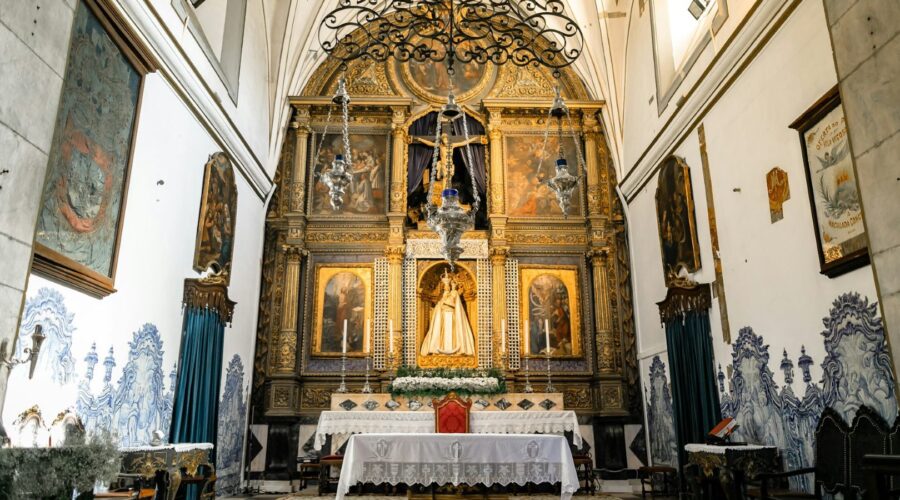
Interdenominational: A Guide to Understanding and Navigating Different Christian Denominations
Introduction
In the vast landscape of Christianity, a myriad of denominations exists, each with its unique doctrines, practices, and traditions. While these differences can sometimes lead to division, they also offer a rich tapestry of perspectives and expressions of faith. Understanding interdenominationalism, the practice of cooperation and dialogue among different denominations, is crucial for fostering unity and building a more inclusive Christian community.
Definition of Interdenominational
- Interdenominational refers to activities, organizations, or gatherings that involve members from different Christian denominations.
- It emphasizes common ground and collaboration while respecting the diversity of beliefs and traditions.
- Interdenominationalism promotes ecumenical dialogue, joint worship services, and cooperative mission work.
History of Interdenominationalism
The roots of interdenominationalism can be traced back to the early days of Christianity when various groups of believers coexisted. Formal interdenominational movements emerged in the 19th century, with organizations like the World Council of Churches (WCC) and the National Council of Churches (NCC) fostering cooperation and dialogue.
Benefits of Interdenominationalism
- Promotes Unity: Interdenominationalism helps bridge differences and foster a sense of unity among Christians, regardless of their denominational affiliation.
- Deepens Understanding: By interacting with members of other denominations, individuals gain a deeper understanding of diverse perspectives and enrich their own faith.
- Enhances Mission Effectiveness: Collaboration between denominations allows for more effective resource allocation and joint efforts in outreach and mission work.
- Facilitates Ecumenical Dialogue: Interdenominational gatherings provide a platform for open and respectful dialogue, promoting theological understanding and cooperation.
Challenges to Interdenominationalism
- Differences in Beliefs and Practices: Theological and liturgical differences can create barriers to interdenominational cooperation.
- Institutional Interests: The preservation of denominational identity and autonomy can sometimes hinder collaboration.
- Historical Divisions: Past conflicts and historical divisions can make it difficult to overcome stereotypes and build trust.
- Lack of Mutual Respect: Prejudice or condescension towards other denominations can impede the development of interdenominational relationships.
Overcoming Challenges to Interdenominationalism
- Focus on Common Ground: Emphasize shared beliefs and values while acknowledging diversity.
- Foster Open and Honest Dialogue: Encourage respectful conversations that address differences while seeking areas of agreement.
- Build Personal Relationships: Interdenominational relationships are strengthened through genuine connections and friendships.
- Promote Education and Awareness: Increase knowledge about different denominations and their contributions to Christianity.
Examples of Interdenominational Organizations
- World Council of Churches (WCC): A global fellowship of over 350 member churches, promoting ecumenical dialogue and cooperation.
- National Council of Churches (NCC): Represents Protestant and Orthodox denominations in the United States, fostering interdenominational partnerships.
- Confessing Movement: An international network of evangelical denominations that emphasizes theological unity and missional collaboration.
- Gospel Coalition: An interdenominational organization that brings together evangelical leaders and churches for gospel-centered ministry.
Conclusion
Interdenominationalism is an important aspect of Christian unity that promotes understanding, collaboration, and mission effectiveness. By embracing the diversity of denominations while focusing on common ground, Christians can build a more inclusive and vibrant faith community. Overcoming challenges through open dialogue, mutual respect, and shared experiences is essential for fostering interdenominational relationships that deepen our understanding of God and strengthen our witness to the world.

Explore the Institute of Christ the King: Nurturing Catholic Faith through Traditional Liturgy
Introduction
The Institute of Christ the King Sovereign Priest (ICRSP) is a flourishing Catholic society that ardently cherishes the Traditional Latin Mass and upholds unwavering adherence to the pre-Vatican II Catholic liturgy. Founded in 1990 by a group of devout priests, the ICRSP has since expanded globally, establishing communities and apostolates in various nations.
Origins and History
The Institute’s genesis can be traced back to the 1970s when a fervent desire for the restoration of the Traditional Latin Mass began to take root within the Catholic community. In 1990, this aspiration materialized with the establishment of the Institute of Christ the King, led by Monsignor Gilles Wach. The ICRSP received its canonical recognition from the Vatican in 2006.
Mission and Charism
The mission of the Institute of Christ the King revolves around the revitalization and propagation of the Traditional Latin Mass and the rich Catholic liturgical tradition associated with it. The ICRSP firmly believes that the Extraordinary Form of the Roman Rite, with its timeless beauty and profound reverence, fosters a deeper connection with God and strengthens the bonds of Catholic identity.
Liturgical Practices
At the heart of the ICRSP’s charism lies the celebration of the Traditional Latin Mass, also known as the Tridentine Mass. This ancient form of the Mass, codified by Pope St. Pius V in 1570, has been cherished by generations of Catholics for its solemnity, reverence, and adherence to Sacred Tradition.
The ICRSP priests don elaborate vestments and meticulously follow the intricate rituals of the Tridentine Mass. The Latin language, the traditional language of the Church, is exclusively employed, contributing to the sense of continuity and connection with the Church’s rich history.
Formation and Apostolates
The ICRSP places great emphasis on the formation of its priests and seminarians. Seminarians undergo a rigorous program of studies that encompasses theology, philosophy, sacred liturgy, and pastoral ministry. This comprehensive formation equips them to lead the ICRSP’s various apostolates.
The Institute’s apostolates include the celebration of the Traditional Latin Mass in parish churches, the establishment of chaplaincies for traditional Catholic communities, the formation of altar servers and lay ministers, and the publication of liturgical resources. Through these initiatives, the ICRSP actively promotes the Traditional Latin Mass and fosters Catholic renewal.
Global Presence
The Institute of Christ the King has established a significant global presence, with communities and apostolates in over 30 countries across five continents. In the United States, the ICRSP has a strong presence in cities such as New York City, Chicago, and San Francisco. In Europe, ICRSP communities can be found in France, Italy, Spain, and the United Kingdom.
Impact and Recognition
The Institute of Christ the King has played a pivotal role in the revival of the Traditional Latin Mass and the preservation of Catholic liturgical heritage. The Institute’s unwavering commitment to tradition has garnered both admiration and support from many Catholics worldwide.
The ICRSP has received recognition and approval from prominent Church authorities, including Pope Benedict XVI and Pope Francis. The Institute’s work has been featured in numerous Catholic publications and media outlets, further amplifying its influence and impact.
Conclusion
The Institute of Christ the King Sovereign Priest stands as a beacon of unwavering Catholic tradition in the contemporary world. Through its unwavering dedication to the Traditional Latin Mass and its commitment to liturgical excellence, the ICRSP nourishes the faith of countless Catholics and contributes to the vitality and renewal of the Catholic Church. As the Institute continues its mission, it remains a source of inspiration and guidance for those who seek to deepen their connection with the Church’s rich liturgical and spiritual heritage.